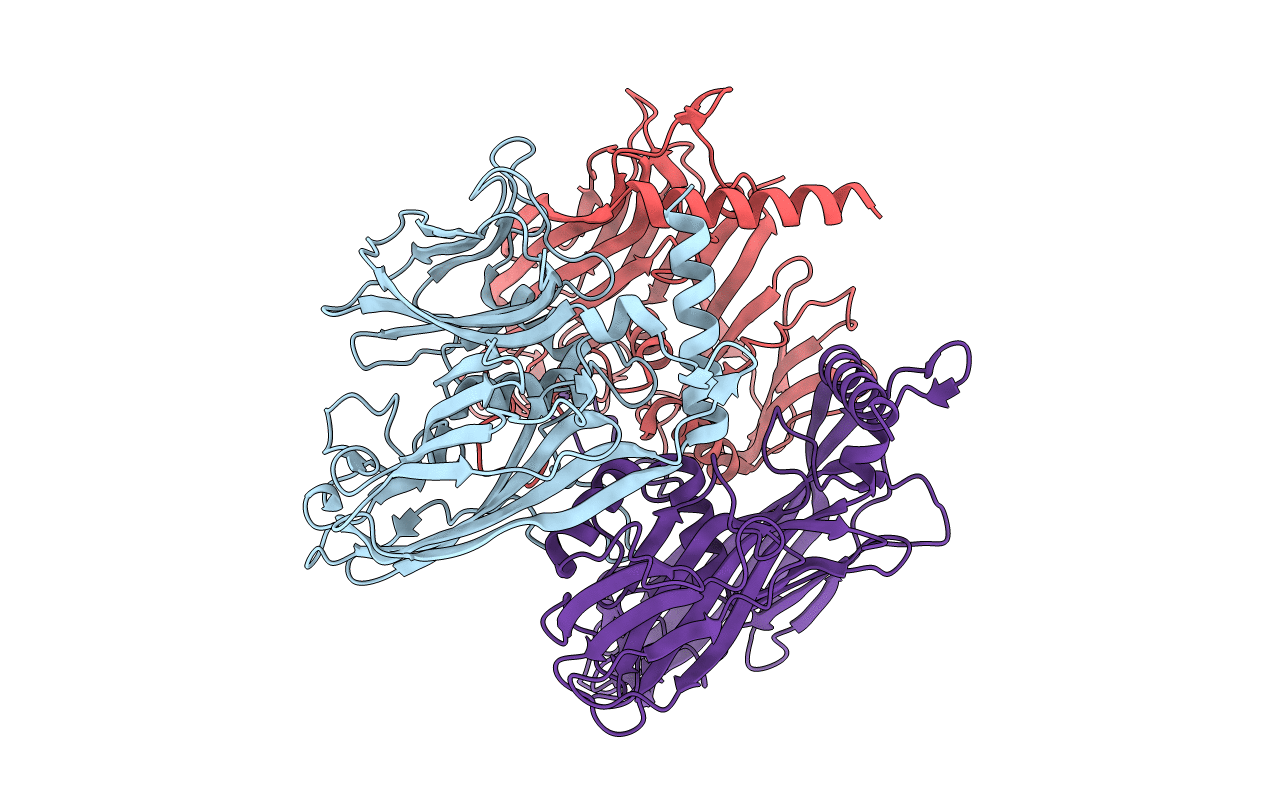
Deposition Date
2000-12-18
Release Date
2001-01-17
Last Version Date
2024-11-13
Entry Detail
PDB ID:
1HQN
Keywords:
Title:
THE SELENOMETHIONINE DERIVATIVE OF P3, THE MAJOR COAT PROTEIN OF THE LIPID-CONTAINING BACTERIOPHAGE PRD1.
Biological Source:
Source Organism:
Enterobacteria phage PRD1 (Taxon ID: 10658)
Host Organism:
Method Details:
Experimental Method:
Resolution:
2.20 Å
R-Value Free:
0.22
R-Value Work:
0.20
R-Value Observed:
0.20
Space Group:
P 21 21 21


